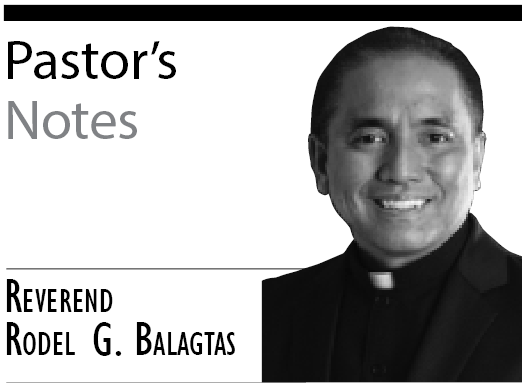THE trouble with hiring “creative” advertising and PR geniuses for one’s political campaign is that they can get carried away by their creativity.
Take the Liberal Party’s demolition strategy against Vice-President Jojo Binay code-named, “Oplan Stop Nognog 2016.” It sounds really clever until you realize the implications.
In colonial times, ordinary Filipinos, belonging to the Malay race with brown complexions turning even darker under the sun, were called “Indios.” But the term meant the same as “nognog” which, on the other hand, happens to be the equivalent of the incendiary “N word” in America.
In other words, nognog means nigger. A Google search revealed the definition of nognog as follows: “Derogatory Filipino word for a black person, equal to saying nigger. It is commonly used (among) Filipino(s) when referring to black (African) people.”
Denigrating a person’s dark complexion has been a favorite putdown by peninsulares, insulares and mestizos going back to Spanish colonial times. In fact, Jose Rizal had some very sarcastic comments about the Filipino hypocrites who desperately wanted to be seen as “Kastilaloy” or, at least, “Tisoy,” to give them a feeling of superiority over the rest of the populace.
We still see a lot of these fantasizing Wannabe-Whites these days, which explains the brisk sales of skin whiteners and the popularity of derma clinics.
Paul Bograd, reportedly, the political consultant of Mar Roxas and the Liberal Party, had better hope that “Oplan Stop Nognog 2016” is not traced to his brilliant mind. Being from the US and being white, Bograd must surely be aware of the backlash that awaits him, especially from the National Association for the Advancement of Colored People (NAACP), if it appears that he has something to do with dreaming up the code name.
The NAACP is the oldest and largest civil rights organization not just in the US but in the world and its mission is clearly stated in its name, the “advancement of colored people.” In America, anyone who is not white (as in European white) is considered colored, but the term particularly refers to African-Americans.
As a matter of interest, I asked the president of the San Jose/Silicon Valley chapter of the NAACP, Rev, Jethroe Moore II, what he thought of the use of “nognog” to denigrate a political opponent.
Said Moore, “Anybody who uses race to put down a political opponent does not deserve to run for public office. Skin color has nothing to do with qualifications for public service.”
Moore, who is also a California Southern Baptist pastor and co-pastor of the Rehoboth Christian Center, pointed out that “nigger” was not in the vocabulary of Filipinos until the end of World War II.
“The term nigger was introduced by American GIs from the South and always in an insulting manner against black soldiers,” said Moore.
I asked the NAACP official what he had to say if he learned that a white American political consultant had given his blessings to the racist term.
“I would consider him an ignorant individual who should brush up on civil rights,” said Moore.
Of course, as far as the creative communications team of the LP may be concerned, what African-Americans (like Barack Obama) think about Nognog is irrelevant to a Philippine presidential campaign..
But then, what if nognog refers, not just to African-Americans but to the majority of Pinoys as well?
For perspective, 55 percent of the Philippine population reside in the rural areas. Most of them work in the fields under the hot sun. As a result, their complexions turn dark and they become – to use the LP’s favorite term – “nognog.”
That fact should scare the hell out of the advertising and PR consultants who unwittingly advised their presidential aspirant to insult 55 million Filipinos.
That’s not yet counting the man-on-the-street nognogs who daily bear the long lines of MRT and LRT in Metro Manila and the sun-baked, sweating millions in urbanized provincial towns and cities.
One has to be a total idiot not to realize that to call Jojo Binay nognog is to identify him with the masses, with the average Pinoys who have not benefited from trickle-down economics, and with the hungry families who haven’t seen the country’s credit upgrades translated into rice and fish on their tables.
To the masses, nognog is the opposite of “coño kids.” “Coño” is a Spanish expletive. For the benefit of the young, “coño kids” was a term in popular use in the 50’s through the 70s to refer to mestizos who were perceived as arogante and mata-pobre and were prone to snap, “Coño!” at folks they considered below their social status.
While the perception may be unfair to mestizos in general (the Zobel brothers, Fernando and Jaime Augusto, are among the most respectful and decent folks I have ever met), a latent resentment does persist among the masses against people who are considered “coño kids.”
The same kind of resentment is also held against those labeled utak-haciendero. When Mar Roxas hurled unprintable invectives at Wack Wack golf club employees, that automatically branded him utak-haciendero as well as coño kid.
Back in the late 80’s, the new country manager of San Miguel USA, Vincent Tarroja, commissioned consumer research to find out why San Miguel beer, in spite of its dominance in the Philippines, Spain and Asia, was losing ground in America. Even in California, where distribution was relatively good, San Miguel was not doing well.
The survey results were shocking enough because it showed that, among Pinoy drinkers of imported beer, San Miguel only ranked 5th – behind Heinekin and Corona. But what was stunning was the “resentment” that Pinoy beer drinkers had against San Miguel, as a company – a resentment that rubbed off on the brand – because of the perception that it was being run by “coño kids.” In other words, San Miguel USA management was perceived as haughty and arrogant.
Tarroja, a veteran marketing man, addressed the problem by launching a “reconciliation campaign” to win back the Pinoy consumers in California and across the US. The aggressive community relations effort succeeded in changing the association of San Miguel beer from “coño kids” to “Iba ang may pinagsamahan.” In one year, sales of the pale pilsen grew 27 percent.
I wrote about this marketing case in my book, “How to Make a Benta – Anecdotes, Lectures and Articles from the Advertising Wars” (Amazon.com). I’m very familiar with it because the San Francisco branch of the ad agency, Advertising & Marketing Associates, of which I was then CEO, handled the community outreach. And I personally manned the consumer hotline at the office of San Miguel USA in Foster City.
At any rate, if Mar Roxas and Alan Peter Cayetano (who was called anak-araw as a kid because of his white American lineage) really want to “Stop Nognog in 2016,” they had better tell their strategists that they are doing Jojo Binay a favor.
Indeed, being called nognog is more endearing than utak-haciendero or coño kid – especially if you want to become president of a country of nognog.
(gregmacabenta@hotmail.com)




